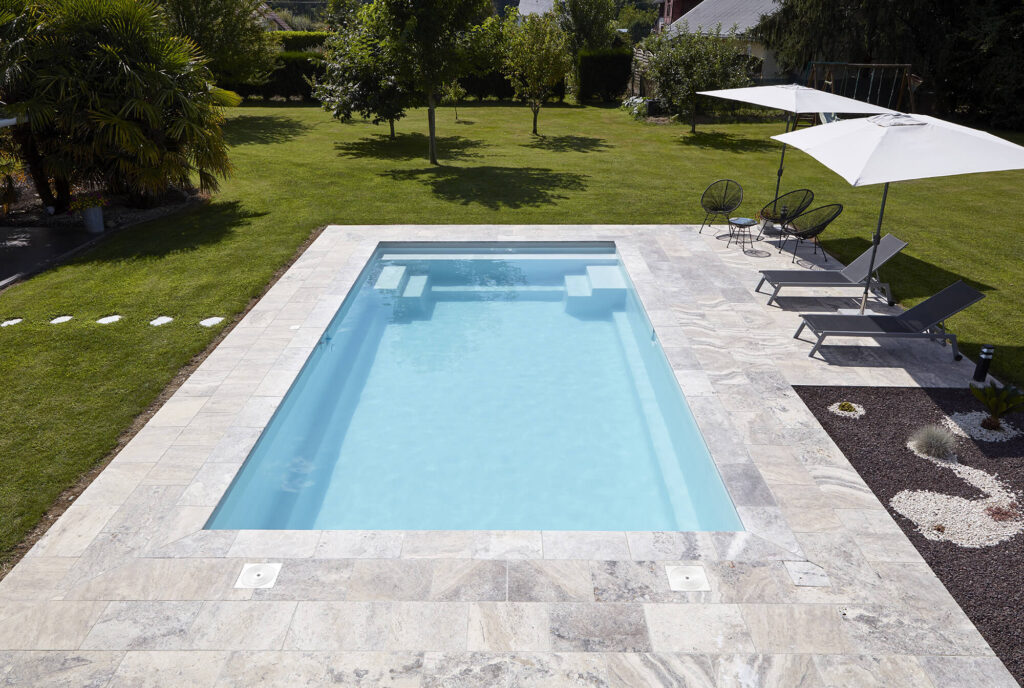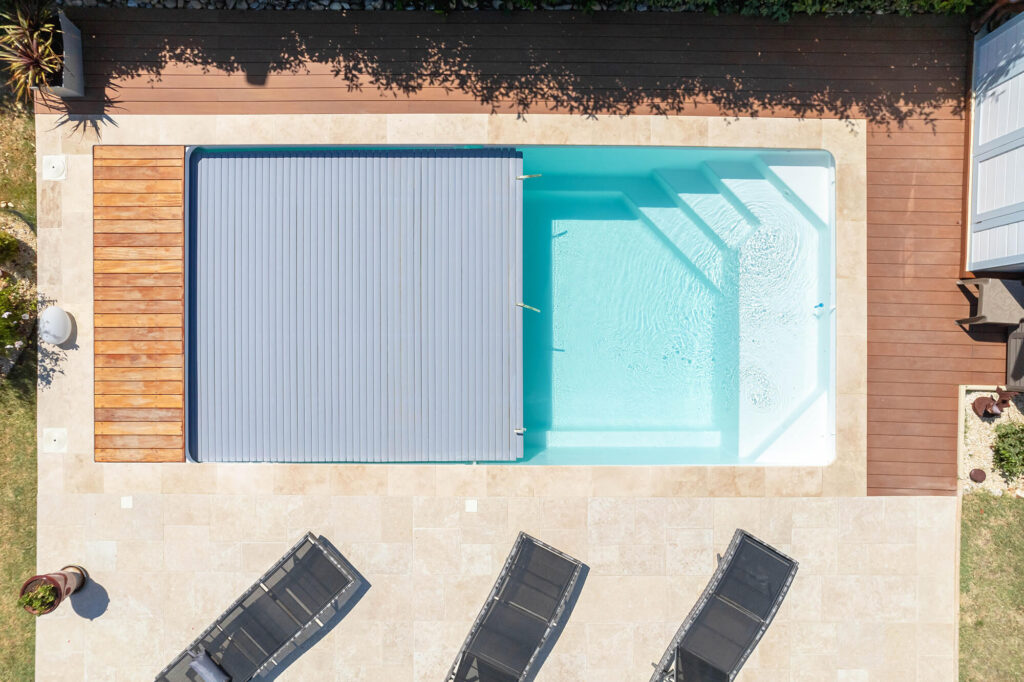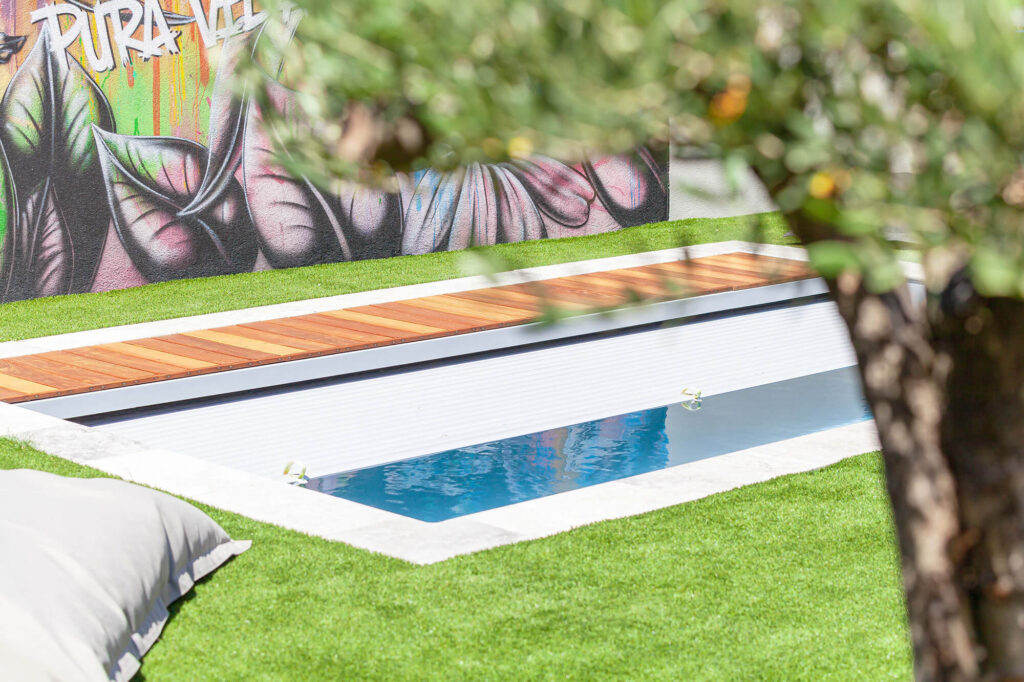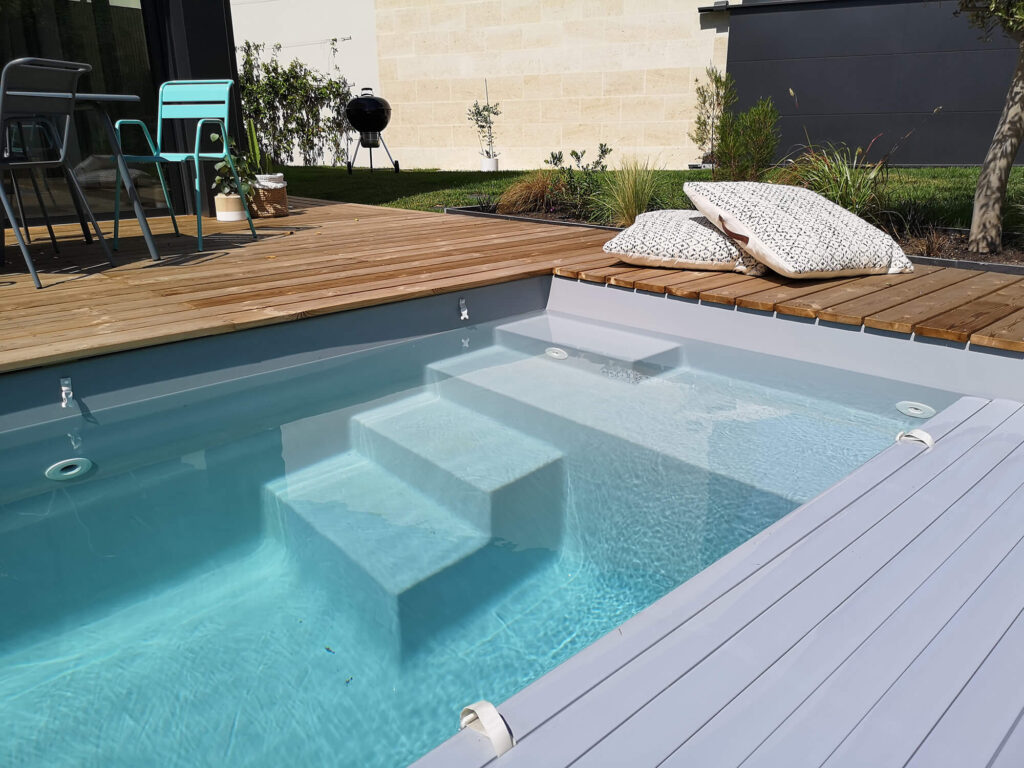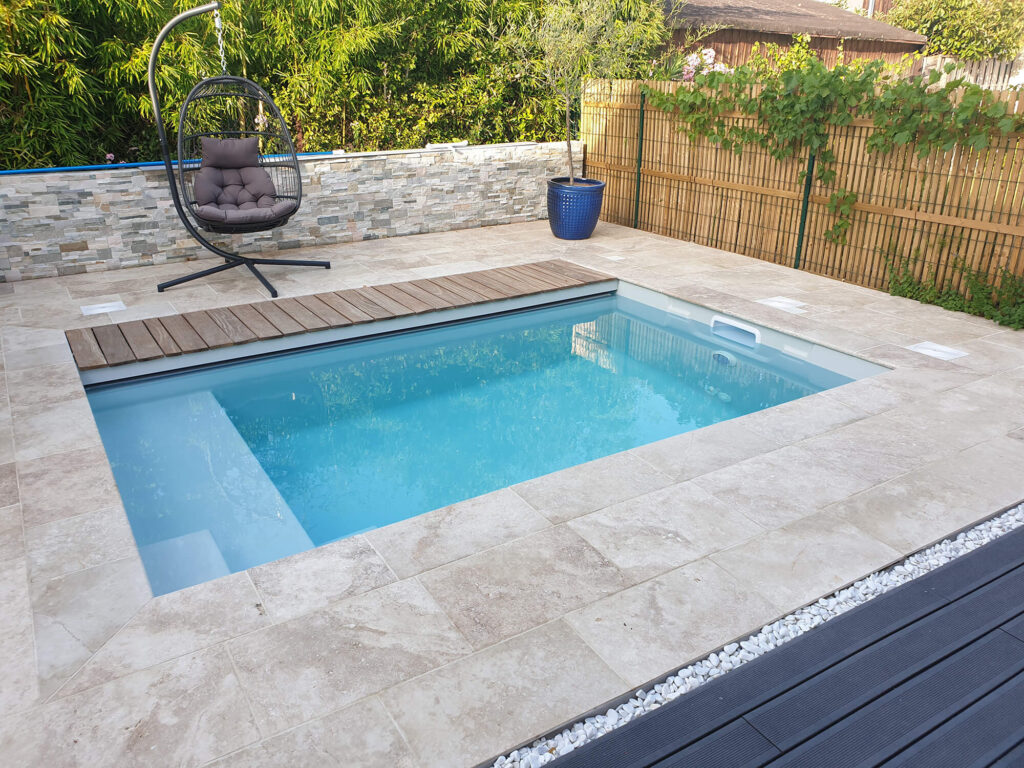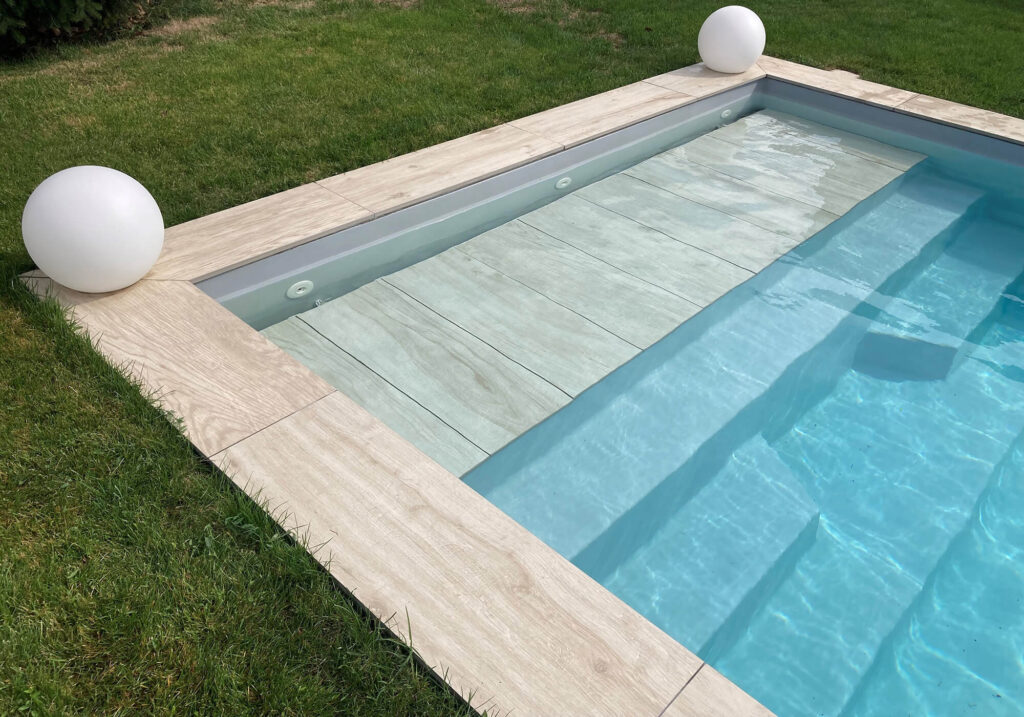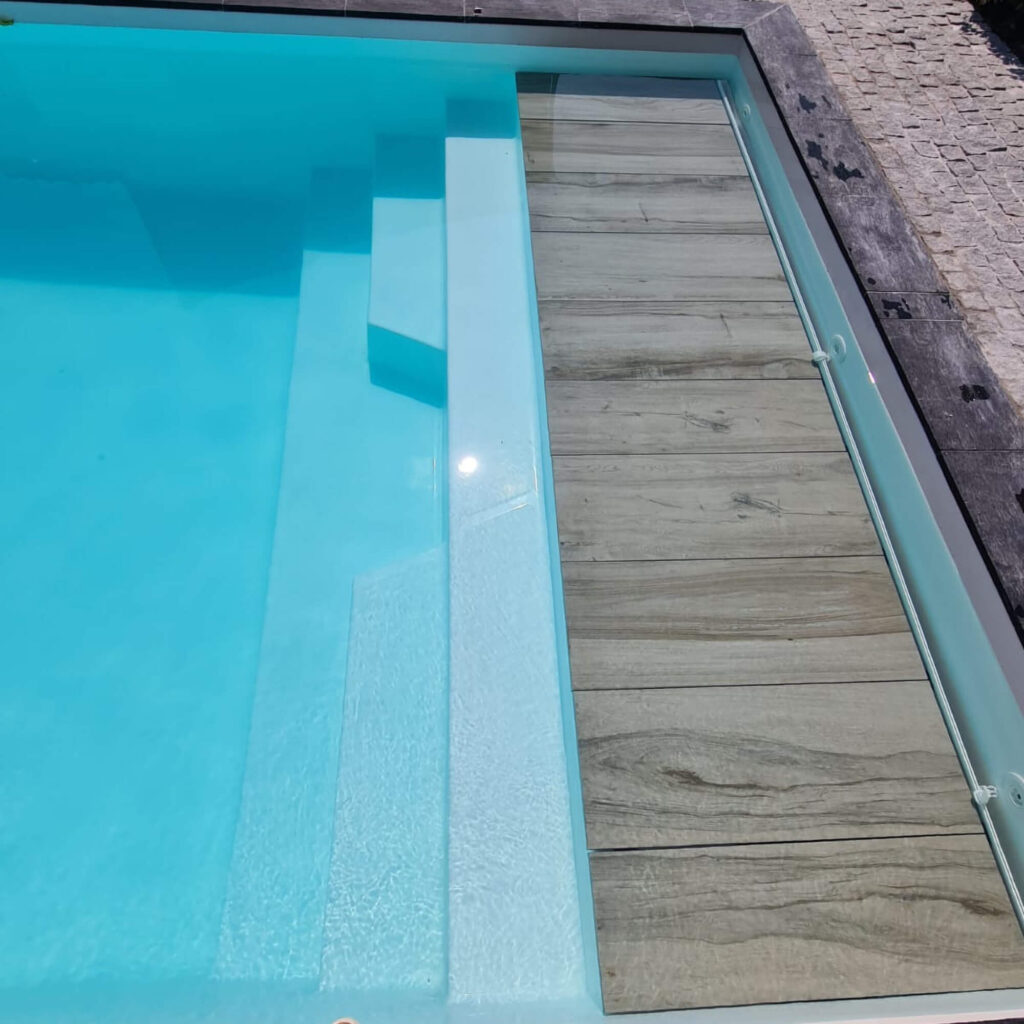Maintaining your pool water is essential to enjoying a safe and enjoyable swim. Unfortunately, sometimes the water can become cloudy , which can be both unsightly and a sign of an underlying problem.
If you are wondering why the pool water is cloudy and what to do about it, you have come to the right place. In the following lines, you will find all the information you need to understand and correct your problem to regain crystal clear water . Follow the guide!
Why is my pool water cloudy?
Is your pool water starting to get cloudy? In reality, there are several things that can cause cloudy water in your pool . Before you can effectively treat the problem, it is important to determine exactly what is causing the problem.
The causes may concern the water itself or the equipment of your pool. Here are the most frequent ones:
Lack of disinfectant
Disinfectant (chlorine, bromine, salt) is one of the most important elements in maintaining the quality of your pool water. Its main role is to disinfect the water by eliminating microorganisms such as bacteria, viruses and algae , which can make the water unfit for swimming.
An insufficient level of chlorine (or any other disinfectant) can quickly lead to a deterioration in the quality of the water, making it cloudy, murky or even greenish, while posing a risk to the health of bathers.
To prevent the problem, remember to regularly check the level of disinfectant in your water and make sure it is within the standard. This will prevent you from degrading the quality of the water and therefore ending up with a green pool in a few days!
Insufficient filtration time
The filtration system is often considered the "lung" of your pool. And for good reason, it alone provides 80% of water treatment. Consequently, it plays an essential role in maintaining the cleanliness and clarity of the water by eliminating impurities, debris and microorganisms (pollen, leaves, dust, etc.).
When the filtration system is not working properly, it can quickly lead to cloudy or even milky water . Understanding how the filtration system works and identifying potential problems is essential to maintaining a swimming pool in top condition.
A pH imbalance
The pH of your pool water is one of the most important parameters to monitor regularly. It measures the level of acidity or basicity of the water, on a scale of 0 to 14, where 7 is considered neutral. For pool water, the ideal pH is between 7.2 and 7.4, a slight alkaline tendency that optimizes both the comfort of bathers and the effectiveness of treatment products , particularly chlorine .
When the pH level is incorrect , it promotes the appearance of suspended particles in the water, which are responsible for its milky appearance. In addition, a pH that is too high can promote the proliferation of algae , further contributing to clouding the water.
Chalky swimming pool water
It often happens that the water in your swimming pool becomes cloudy due to a high concentration of limestone : this is called “hard” water.
If your pool is equipped with a sand filter, excess limescale can clog the sand. The result? The water can no longer pass through the filter properly and returns to the pool without being properly cleaned, thus promoting the growth of algae. This makes the water cloudy to the point that the bottom of the pool becomes difficult to see.
Algae residues
Have you recently faced a problem with green water in your pool? After carefully following our recommendations to restore water quality, it has become cloudy?
This phenomenon is due to the presence of dead algae residues that are still floating in the water of your pool. To eliminate them, it is necessary to carry out a specific treatment and a thorough cleaning.
How to get clear water?
Once the cause of cloudy water has been identified, it is essential to act quickly to regain the pleasure of clear, pleasant water for swimming.
To do this, start by restarting the filtration system and adding flocculant or a clarifier product to one of the pool's skimmers. This combination of filtration and clarifier should be enough to restore water clarity.
If the water remains cloudy after this procedure, the problem is probably not the filtration. In this case, check the water parameters , paying particular attention to the pH. If the pH is too high (above 7.4) or too low (below 7), adjust it gradually over several days to bring it back to optimal levels.
In addition to pH, be sure to check the disinfectant level , whether it is chlorine, bromine, salt or active oxygen.
If, despite these efforts, the water does not regain its clarity, a shock treatment associated with the use of a flocculant or clarifier will be necessary. After the treatment, clean the pool regularly to remove impurities and backwash the filter . Use an anti-scale product and backwash the filter before restarting filtration.
Getting your pool water back to clear after it has become cloudy may seem difficult, but with the right actions and regular maintenance, it is entirely possible. By understanding why your pool water is cloudy and following the steps to fix it, you will be able to enjoy your pool again with peace of mind. However, as the saying goes, “ prevention is better than cure .” So, regularly check and adjust your treatments and installations.
Configure your pool online Back to all news

